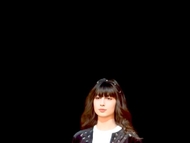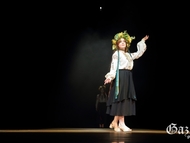 “Passport and tickets?”
“Passport and tickets?”“Check.”
“Money?”
“Check.”
“What have we forgotten?”
“Can’t think of anything.”
“Alright, gapsida!”
Do these words sound familiar? Do you have a little routine that you go through, either silently or out loud, before you leave on a trip? I almost always find it necessary to alleviate the little nagging doubt in my head that, all appearances to the contrary, something has been forgotten. Alas, sometimes, as in this summer vacation, it happens. For the first time in my life (I think), I managed to forget not one, but two things: my sunglasses and my camera. Pure genius. Here we are off to Myanmar (a place I’ve never been before), and I have lost the means of both protecting my eyes from the tropical sun and recording whatever it is they might see through the glare.
The first problem was, as one might expect, easy to rectify. Myanmar would not be ranked as one of the more expensive countries in the world, and a quick trip to the market turned up a practical (and cheap) replacement pair of shades. The latter problem, on the other hand, presented a somewhat more difficult set of options.
Although duty free shops offer a comprehensive, and in many cases reasonably priced, selection of electronic goods, I had no intention of forking out several hundred dollars on the latest model of digital camera when I knew there was a perfectly serviceable model sitting on the table at home. The alternative, a cheap Myanmar model, was equally unattractive, as I knew I would never use it again. The final option, the purchase of a store of disposable cameras, proved to be a non-starter. Apparently, the throwaway mentality of the average tourist has yet to infect the psyche of the typical camera shop owner in Myanmar, i.e. I couldn’t find any anywhere. With options apparently exhausted, the awful truth dawned: this was to be a cameraless trip.
Staying in Yangon, this proved not to be a problem. Photographic urges tend to be in short supply when one doesn’t see the sun for days on end. I had enough problems keeping myself dry in the endless monsoonal downpours without worrying about taking pictures. As such, it was several days before the first real opportunity for photography presented itself.
Standing at the summit of Mandalay Hill, one is presented with a breathtaking vista of lush, green floodplains, distant mountains, and the meandering track of the Ayerawaddy River. Almost directly below the hill run the imposing two-kilometer long walls of Mandalay Fort, incongruously juxtaposed with the sight of a modern golf course, while golden paya (temples), glowing red in the setting sun, dot the landscape in all directions. Picturesque? Indeed, and yet I found it something of a relief not having to choose the best angle for a shot, not having to wait for the perfect moment, for the sky to turn the perfect shade of red, all the while wearing a seemingly surgically attached prosthetic over my right eye. Watching the other tourists on the summit race around looking for that perfect shot, I contented myself with gazing over the entire panorama and chatting with local students, eagerly taking advantage of the opportunity to speak English with a native speaker.
Next was Bagan, an ancient city justifiably considered one of the wonders of Asia, with its hundreds of temples and palaces sprouting up from amid the tree and scrub covered landscape, provoking reactions of awe, humility, and delight. The temples here may not be quite as spectacular as in Angkor, yet there is a peace and tranquility surrounding them that is noticeably absent in Cambodia. Perhaps it is the relative lack of visitors and souvenir sellers, the opportunity to sit unmolested atop Shwesandaw Paya, looking out on all the temples to the east and imagining the grandeur of this area at its height, that allows one a more personal, possibly even profound, appreciation of the area. Yet, despite undeniably magnificent scenery, I felt little urge to whip out a camera, little need to imprint this image on anything other than my memory. I began to wonder whether I had missed something in Angkor, whether I had been too focused on getting that sunset, or that angle, or that reflection. Was it simply the place, or had the lack of a third eye freed up my other senses, allowing a greater appreciation of the totality of the experience?
Upon reaching Inle Lake, a 22 kilometer long lake 1000 meters above sea level, I was no longer looking for a camera, no longer worrying about not being able to remember the images from my trip. Such images, of fishermen rowing their boats with their legs, of floating gardens, of villages built on stilts in the middle of the lake, of people smiling greetings from their boats as we passed, were real, not contrived, and for that, all the more memorable. I began to resent my camera-toting companion, stopping and circling the fisherman three times to get the perfect angle, or the tourist with his camera stuck six inches away from the face of a Padaung tribeswoman. What were they doing? What else were they missing? Does a camera give someone the right to turn into a disrespectful twit?
Perhaps a camera is not necessarily a third eye: perhaps sometimes its just one eye, a cyclops if you will, and a pretty blinkered one at that. Wide-angled lenses and other gadgetry notwithstanding, a camera still does not have the same perception as the human eye, nor does it have those all-important links to the other senses. However, lest I’m accused of being some kind of technophobe or back-to-nature freak, remember, I am a camera owner, and I use it. All I am suggesting is that before pointing and pressing, might it not be a good idea to take a step back, to take the chance to indulge the rest of the senses? A photographer friend of mine once said something to the effect that the best images are the ones in your head, not on a disc or on a piece of paper. I think he’s right.
By David Lyons
KMG Proof Reader
Prof., Dept. of English Lang. & Lit.
KMG Proof Reader
Prof., Dept. of English Lang. & Lit.








